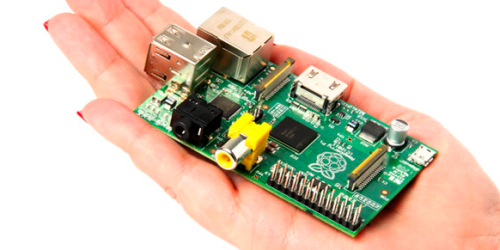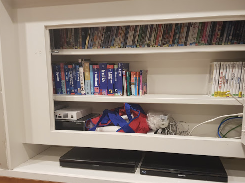Tips: Get Your Cabling in Tricky Places

Do you have an existing house or structure and trying to get a cable into a tricky place? Here are a few tips from methods I have used over the years.
-
-
- Conduit Sucker
There is nothing more annoying than finding a broken cable in a conduit or pipe and having nothing to pull the replacement wire though. it is especially hard when the conduit has a bunch of bends or T junctions.
What I do is get a roll of cotton thread and madly shove a whole bunch of cotton into the start of the conduit. Then get the vacuum cleaner and stick it on the other end with a good seal. No matter the length, the cotton will be sucked down… keep sucking until you seen the end of the cotton. Then I tie some stronger string onto the cotton and pull though, then some nice strong conduit wire. Don’t forget plenty of conduit lube (or liquid soap at a push… but that gets messy) when pulling the final cables though. This should work even if you have to come out a T or junction – just block up any other exits that you can.
- Conduit Sucker
-
- The Mag Slide
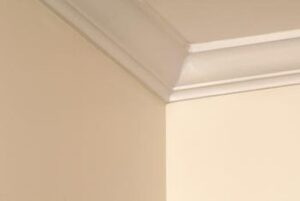
This might work for you for tricky situations too (eg surface conduits), but I had a situation where I needed a security cable in the corner of the room but I couldn’t access the ceiling. I drilled a small hole in the scotcia trim at the top of the ceiling (also called crown molding, cornice or ceiling trim). This happened to be an arc shape, and also happened to have be hollow in behind the arc. I ended up grabbing some very small rare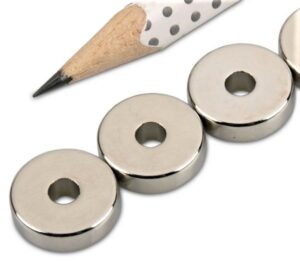 earth magnets, donut shaped ones (but you can probably use other types with some gluing etc). I tied some cotton to one of the magnets and pushed it though, slowly using the other magnet on top of the trim to inch my way along to the room corner. Took ages, and was a pain at a couple of places where the trim was nailed in but eventually I got to the corner and out another small hole. as per the vacuum method, tie on string then stronger wire. The small holes were easy to patch with putty and paint.
earth magnets, donut shaped ones (but you can probably use other types with some gluing etc). I tied some cotton to one of the magnets and pushed it though, slowly using the other magnet on top of the trim to inch my way along to the room corner. Took ages, and was a pain at a couple of places where the trim was nailed in but eventually I got to the corner and out another small hole. as per the vacuum method, tie on string then stronger wire. The small holes were easy to patch with putty and paint.
- The Mag Slide
-
- Bionic Eye
 Wouldn’t it be nice to see what is blocking that cable you are shoving down a wall? The most success I have had for tricky cable feeds is to invest in an borescope (or sometimes called an endoscope). Something like this would have been thousands a few years ago, but if you have a smart phone and can buy from China, I picked up an endoscopic camera for about NZ$20. Something like this or this one if you want a wireless version. Sometimes it is a bit tricky to get the picture the right way up, and enough light to get a decent depth of field but it is amazing to see what is actually going on inside your wall.
Wouldn’t it be nice to see what is blocking that cable you are shoving down a wall? The most success I have had for tricky cable feeds is to invest in an borescope (or sometimes called an endoscope). Something like this would have been thousands a few years ago, but if you have a smart phone and can buy from China, I picked up an endoscopic camera for about NZ$20. Something like this or this one if you want a wireless version. Sometimes it is a bit tricky to get the picture the right way up, and enough light to get a decent depth of field but it is amazing to see what is actually going on inside your wall.
- Bionic Eye
-
- The Fake Downpipe
Here’s a pretty serious and impressive solution if you need to get a bunch of cables from the top level of a house to the bottom, and there is little other way aside from building some horrible cable ducts somehow on a wall or in a cupboard.
Why not build an extra rain downpipe on the outside of the house, but… not hook it up to the guttering. A 75 or 100mm pipe is going to house a huge bunch of cables and you if it looks like a legit downpipe people won’t even know they are in there. If you are running CCTV or Alarm cables, obviously they are only secure if it looks like a proper downpipe (and you don’t tell anyone!), and of course you’d need to separate any ELV from mains cables so they can’t run in the same pipe. I guess it is even possible to run a small conduit inside an existing rain downpipe if really needed, but that is just asking for water ingress.
- The Fake Downpipe
-
- Curtain Rail Pushy Stick
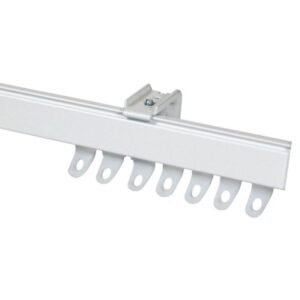
What’s the best type of pushy stick for moving cables up into holes and around the ceiling? My favorites is one of those old U section curtain rails. I always keep a couple of those around for cable shuffling. Why? You can remove all the curtain sliders and they are solid metal U section, which means they really only bend in one plane… ie they don’t twist, but they can bend. You can bend a nice gentle curve into them, tape on a cable and push it into a space. Imagine you need to get a mains cable from one downlight hole to the next with little ceiling space, you can bend the stick with a slow curve, poke it into the first hole and keep pushing in the right direction until it appears at the next hole.
- Curtain Rail Pushy Stick
-
- Ceiling Vac
Similar to the conduit method, I had a situation where I was installing downlights in a fixed, existing ceiling on the ground floor of my house. I could throw cable from one downlight to another lengthwise inside the ceiling, but unfortunately when it came to getting from one to the next width-wise (needed at the end of the room), there was a big floor beam in the way which ran the length of the house. The beam did have just a couple of cms under it, but there was no way I was going to be able to poke something over a ceiling beam, under the floorbeam and then back again over another piece of ceiling timber.
My solution was to get a roll of cotton and shove as much unrolled cotton as I could up into the ceiling space – reaching though the downlight hole to push it as near to the floor beam as possible. In the other downlight hole, I poked up the flexible vacuum pipe and switched it on. With a bit of wiggling and shoving almost half a reel of cotton, eventually it got sucked up by the vaccuum and I was able to attach a string to it. I probably wouldn’t have attempted this if there was a bunch of ceiling insulation in there, but this was in the lower level of a house.
- Ceiling Vac
-

